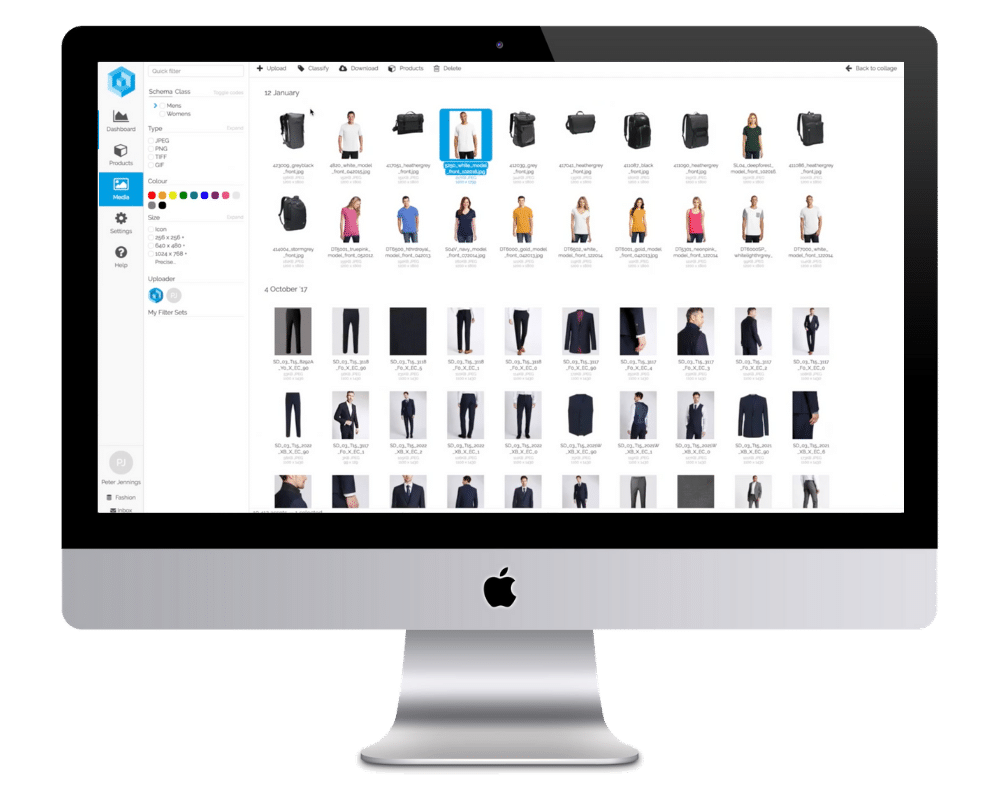When I’m speaking with manufacturers and distributors – particularly in construction and building materials – one of the main things I hear is how challenging it is to keep product data consistent and up to date.
It’s not unusual for teams to rely on spreadsheets and email attachments to share information. And while that might feel manageable in the short term, it often ends up creating a lot of friction. Data gets lost, duplicated, or published with errors, which then holds up sales and damages trust with retail partners.
In this post I’ll answer some of the most common questions I hear day in and day out: how to improve data quality, what to automate (and what to keep manual), and what it actually looks like to become the supplier your customers prefer working with.
If you’re trying to figure out how to get ahead of the pack by making your data work better for you – and for your partners – I hope these insights help.
“The best portals don’t just centralize communications. They also make expectations clear using standardized templates and validation rules.”
Why are data portals becoming such a critical part of modern manufacturer-retailer relationships?
One of the key themes I hear all the time when I’m speaking to organizations in the construction market – whether that’s manufacturers, distributors, or merchants – is that product data quality is still behind the curve.
Particularly as more organizations are focusing on e-commerce, data portals are becoming vital to streamline the process of exchanging data between manufacturers and their retail or distribution partners. Moving away from email and spreadsheets – which are prone to error and lack governance – data portals create a central space to manage everything clearly and efficiently.
The best portals don’t just centralize communications. They also make expectations clear using standardized templates and validation rules. That way, everyone knows what’s required, and you reduce the risk of delays or misunderstandings.
How do you define partner enablement in the context of data sharing and collaboration?
Partner enablement, for me, is all about giving your suppliers or customers the tools to succeed – while still keeping control over the process.
For retailers or distributors, it means providing your manufacturing suppliers with a structure that allows them to upload data easily, while making sure your team isn’t bogged down in manually validating and collating that data.
Ultimately, this helps get products listed faster and more accurately, which leads to more sales. That’s why it needs to be simple to use, scalable, and built with real users in mind.
And crucially, it’s about offering the right kind of access. A self-serve portal gives partners autonomy, but you still control what they can see. That’s important if you have different trade agreements, tiered pricing, or commercial sensitivities.
What key features and functionality should an effective data portal include to be truly useful to retailers?
The key is simplicity. If your portal is hard to use, partners won’t adopt it. That’s why it should feel familiar – nothing too technical, no steep learning curve. You want it to slot into the way people already work.
Flexibility is just as important. You need to support everyone from a large, tech-savvy partner using APIs to a smaller merchant who just wants to download a CSV. The more formats you can support, the more useful and inclusive your portal becomes.
It also helps if the portal includes templates that clearly show what’s required – that way, your suppliers know exactly what they need to provide. That alone reduces the need for back-and-forth.
How much of this process can or should be automated, and what should stay manual?
One of the biggest time drains I hear about is validation. Manually checking for gaps, errors, or inconsistencies eats up hours every week. That’s why automation is so important here – let the portal handle the checks so your team can focus on more valuable work.
But not everything should be automated. When it comes to publishing content to your own channels, it pays to keep that manual. You don’t want to push out the same content as everyone else. Especially in e-commerce, that’s bad for SEO. Having the ability to tweak and tailor your product copy is key to standing out.
What are some of the most impactful ways manufacturers have used data portals to add value to their retail partners?
One of the biggest wins is when manufacturers let customers self-serve. With something like Pimberly’s Customer Portal, retailers can log in and grab the product data they need without waiting on emails or updates.
This is a win-win. It speeds up onboarding, removes friction, and saves time on both sides. Customers get exactly what they need, when they need it. And your internal team isn’t flooded with requests.
You still control what data each customer sees. That way, you’re not exposing everything to everyone, but you’re still giving customers that autonomy and flexibility that makes them want to keep working with you.
How do portals help strengthen partnerships and build trust over time?
It helps massively with trust. If you consistently provide good-quality, structured data that meets your partners’ needs, you’re showing that you respect their time and processes.
When people tell me some suppliers are a “nightmare” to deal with, it’s usually down to slow communication and inconsistent data. If you can make your portal seamless, predictable, and tailored to what each customer needs – you quickly become the go-to partner.
That’s not just good for retention. It also gives you a reputation in the market as someone that’s easy to work with.
What mistakes should manufacturers avoid when rolling out data portals?
The most common mistake I see? Not putting enough focus on communication and onboarding.
You can’t just launch a portal and expect people to use it. You need to bring your partners along on the journey. That means pre-launch comms, training, webinars, walkthroughs, and support. If they feel unsure about how to use it, adoption drops.
And remember: this isn’t a switch-flip. It takes time. You’ll need to explain the value, help them understand what’s in it for them, and give them the confidence to use it.

How do you see data portals evolving with AI and new compliance standards like Digital Product Passports (DPP)?
The demand for data is only going up. More and more, retailers want detailed product specs, sustainability info, and compliance data. Standards like Digital Product Passports will make this even more important.
Your portal needs to be flexible enough to keep up. That’s where features like enrichment requests come in. Instead of manually chasing updates, you can ask suppliers to add or update fields as standards change.
And this is where AI can help too. You can use it to flag missing or non-compliant data, suggest improvements, or help automate those enrichment processes so you’re not starting from scratch every time.
What’s the one thing manufacturers should be doing today to future-proof their partner enablement strategy?
Make sure you’re catering to every type of customer.
Not everyone has the same level of digital maturity. Some will want automated, API-driven setups. Others will just want to download a spreadsheet. Some will ask for a branded portal experience. You need to be able to support all of that.
If you can meet your partners where they are – and do it without putting pressure on your internal teams – that gives you a real competitive edge. Because the easier you are to work with, the more people will want to work with you.













